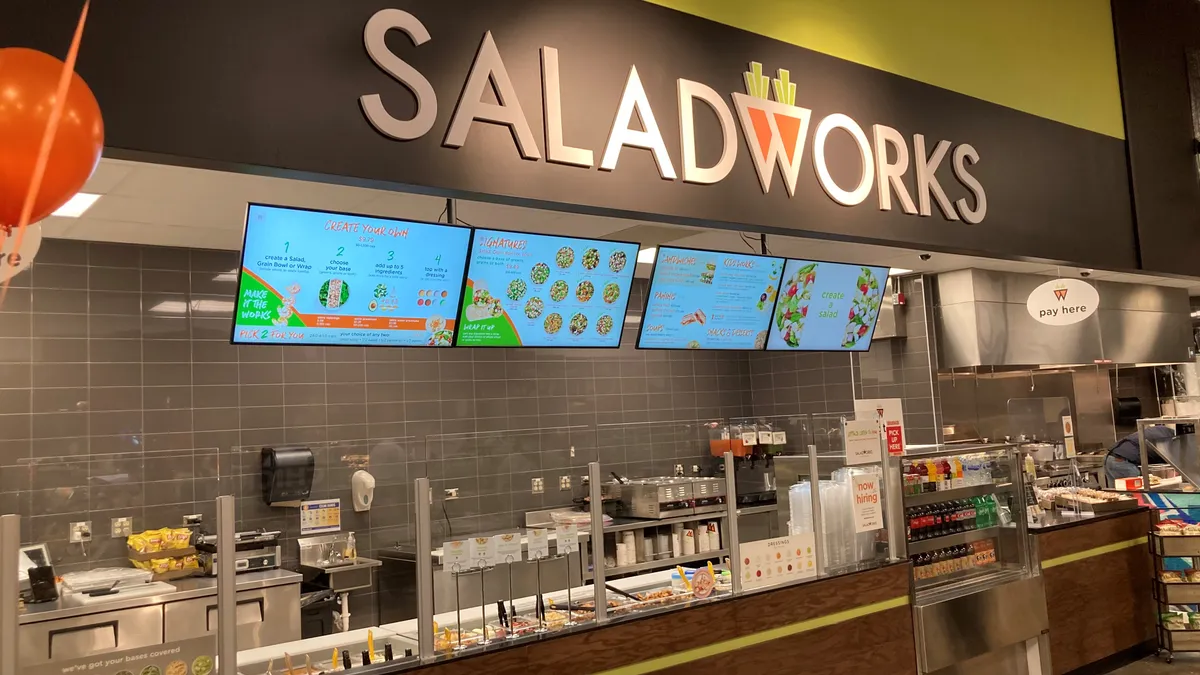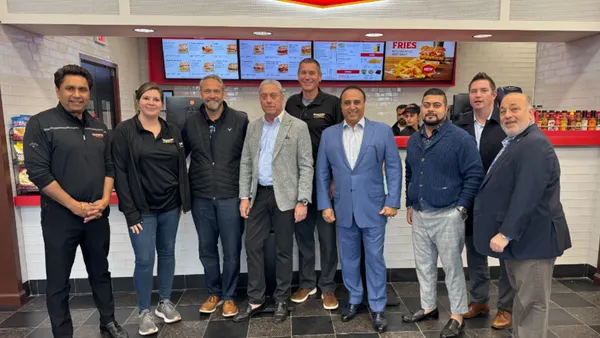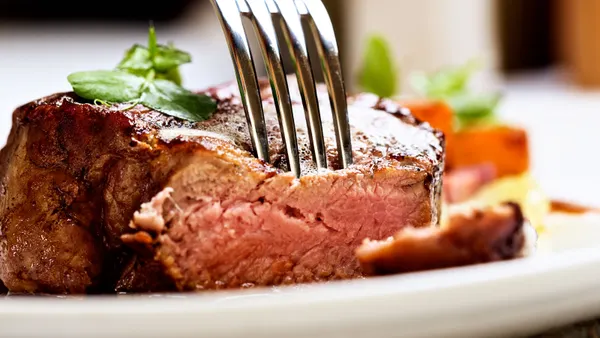Dive Brief:
- Fast casual salad franchise Saladworks opened its first Kroger location in Cincinnati on Friday, a press release by the company announced. It's located on the opposite side of the city from the grocer's downtown headquarters.
- The Kroger in-store restaurant is Saladworks’ seventh grocery store location. Its existing grocery store restaurants span Pennsylvania, Maryland and New York, and it has more than 10 openings slated through the first quarter of 2021.
- The salad chain has opened 22 stores over the first half of 2020 despite the pandemic, leaning into more unconventional locations, including supermarkets and military bases.
Dive Insight:
In the announcement, Eric Lavinder, vice president of development for Saladworks, noted the potential for growth that grocery stores had for the fast casual chain. The salad chain's Cincinnati location offers similar experiences as its traditional restaurants, with create-your-own options for salads, as well as wraps and grain bowls. Its in-store restaurants also allow customers to order online for pickup or delivered through a third-party restaurant delivery app such as DoorDash.
Saladworks documented impressive store number growth over the first half of 2020 despite the pandemic, opening 22 locations by mid-July. As only one-third of its new locations are traditional restaurants, the chain has taken to unconventional locations, including college campuses, U.S. Air Force bases, grocery stores, as well as also expanding its use of shared virtual kitchens through Ghost Kitchen Brands.
As the fight for diner dollars intensifies, grocers have made several moves to bring restaurant operations into its stores. Over the last few years, Kroger, for example, partnered with Rapid Fired Pizza to bring freshly made pizza to select Ohio locations. At another Cincinnati Kroger located in the city’s central business district, the grocer opened its first food hall within a supermarket, offering the choice of five restaurants, a full-service bar and seating for up to 200 shoppers.
The grocer has also started experimenting with ghost kitchens, a concept popular with restaurants this year as the pandemic hampers on-premise dining. Kroger will open two ghost kitchen facilities insides its stores this month, one near Indianapolis and another in metro Columbus, Ohio.
Numerous other major grocery brands, including Albertsons, Hy-Vee, and Whole Foods, have incorporated in-store restaurants, or 'grocerants,' in select stores to attract new shoppers’ attention, particularly among younger audiences. These in-store restaurants, like Starbucks, Saladworks and Wahlburgers in Hy-Vee, are often fast casual eateries to accommodate grab-and-go and to match the informal atmosphere of a grocery store.
In-store restaurants can attract greater cross-pollination between grocery and restaurant-goers especially with its alcohol offerings, serve as a testing ground of culinary and brand strategy innovation, and encourage customer loyalty. Save Mart, for example, has been spotlighting guest chefs at its California flagship’s in-store restaurant to bring a higher culinary pedigree to its offerings. But opening any in-store restaurant during the coronavirus pandemic still comes with risks, if customers don’t feel safe lingering in grocery stores or state and local restrictions on indoor dining tighten, as they have in many places in recent weeks.










